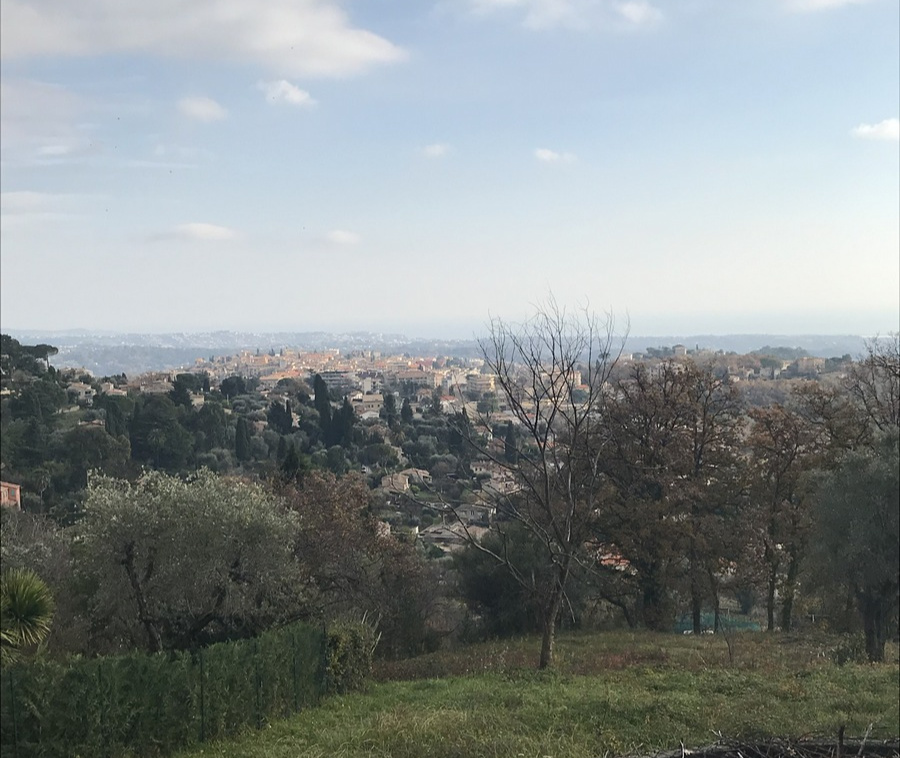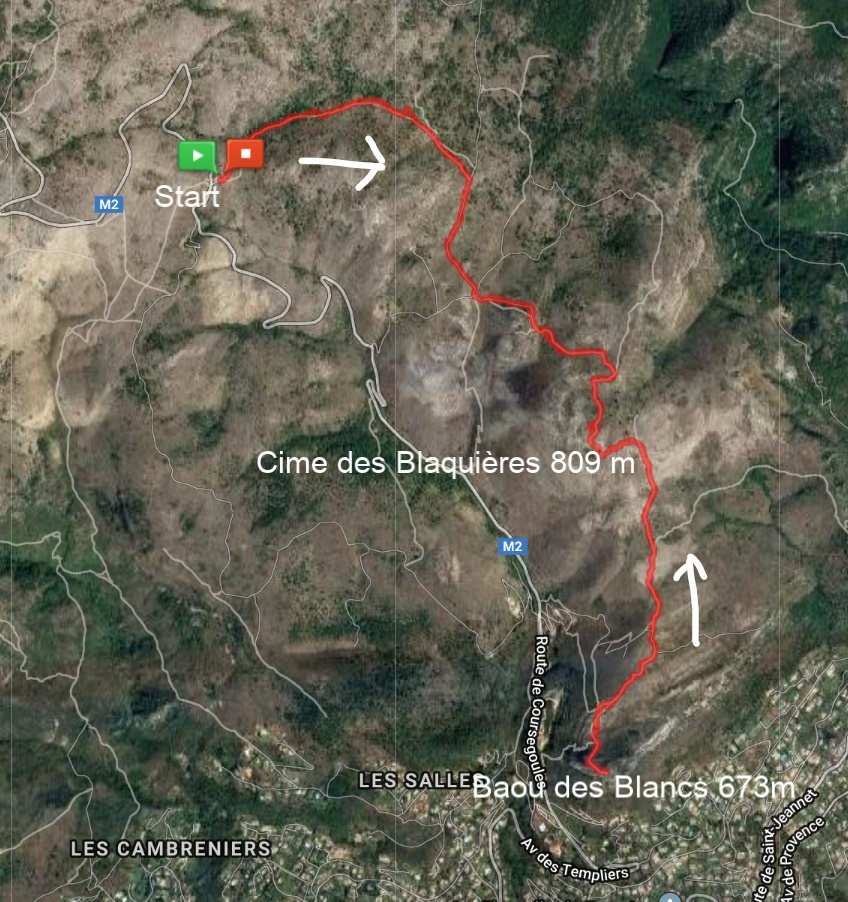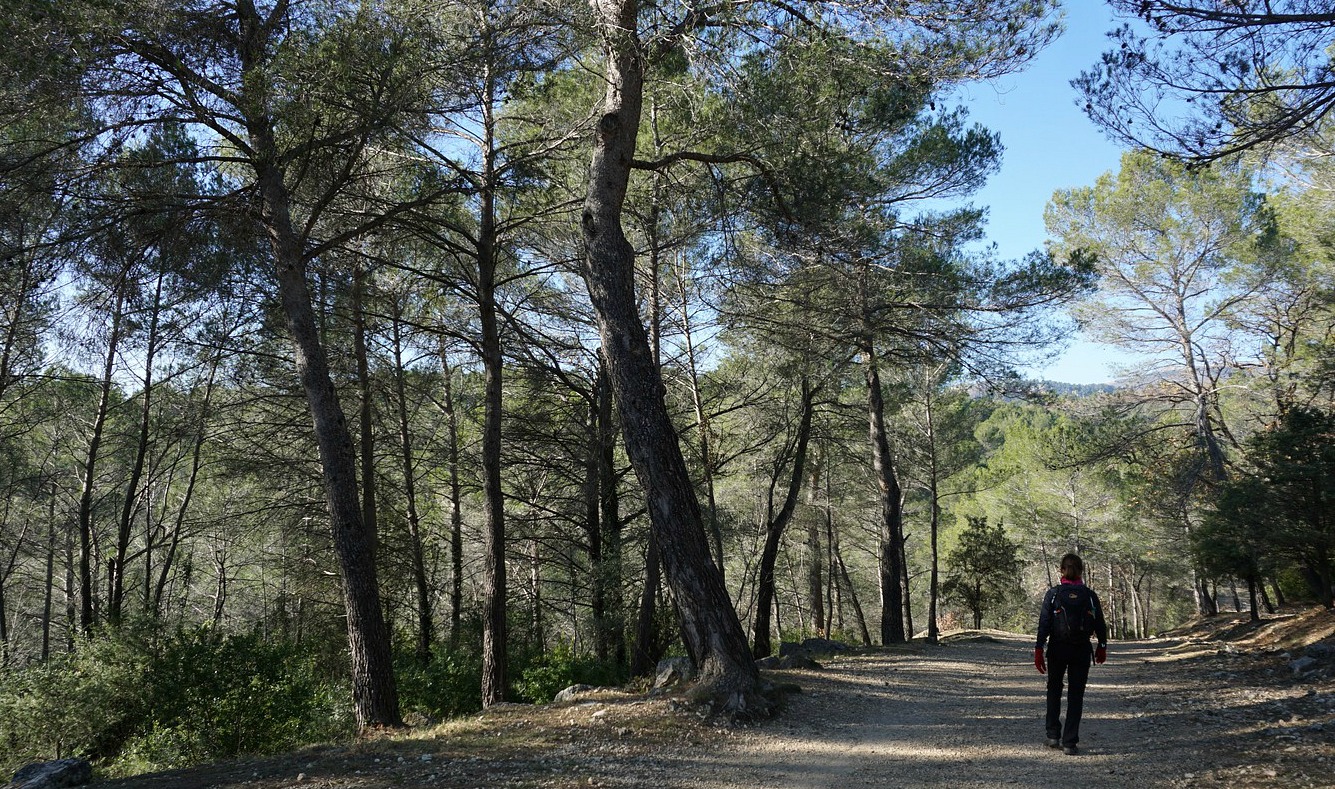

In these corona virus times, we are told to be confined in our homes and even simple food shopping has become a major procedure to be postponed as much as possible. From a few simple ingredients it is possible to make a “creamy”, tasty, and healthy pasta dish.
Instead of real cream I used thick French fromage blanc 0% fat and added a generous amount of good local olive oil. If you don’t have fromage blanc in your shop, you could use thick Greek yoghurt or crème fraîche. If it is low-fat or zero fat, simply use more olive oil and it works well in this recipe.
I topped the spaghetti with slices of parma ham, but smoked salmon, defrosted shrimp, or tinned sardines would go just as well. Feel free to experiment!
2 servings
Juice of ½ lemon
100g fromage blanc 0% fat or Greek yoghurt or crème fraîche
2 – 3 tbsp. good olive oil
A handful of grated parmesan
1 clove garlic, minced
Freshly ground black pepper
4-6 slices of parma ham
1 tsp. dried parsley
Spaghetti, pref. organic whole wheat, for 2 servings
Brush the lemon with liquid soap and rinse to remove any possibly lingering corona viruses. Then press ½ lemon into juice.
Bring the pasta cooking water to a boil, add the spaghetti and cook as long as indicated on the package.
While the pasta is cooking, pace the fromage blanc / yoghurt in a large bowl. Add the grated parmesan, olive oil, lemon juice, minced garlic, dried parsley, and black pepper. Stir well.
When the spaghetti is cooked, drain it and add to the bowl. Toss well, the sauce thickens and coats every spaghetti strand.
Divide the spaghetti into two bowls and top with parma ham.

This loop trail above Vence called Circuit du Malvan represents another great winter walk on Côte d’Azur. The French description can be found on the randoxygène web site.
To reach the trailhead behind Chateau Notre-Dame-des-Fleurs, fork right (when driving from Vence) from the RM2210 road about 3 km west of Vence, just after the roundabout.
Behind the Chateau, signpost #119 showed the start with the text Circuit du Malvan among other locations. We headed north, and ascended passing signposts 118,117 and 116. We soon came to the trail that we had hiked along on several occasions, reaching Chapel St-Raphaël. A bit higher up in the incline, ruins of the Malvans Fortress were visible. We continued straight north, crossed the tiny Malvan Stream, then forked sharply southeast (right) at signpost #114. At signpost #113, we again forked right, now heading towards Vence.
Circuit du Malvan was not anymore written on these signposts, only Vence and the M2 road. But navigation was easy enough. We soon reached residential areas and paved streets, and followed the yellow marks. The trail took some shortcuts between residences as at signpost #111, which took us to Chemin de l’Ormée (signpost #110, a bit hidden) and forked right (west). We walked along it about 900 m before turning left to Chemin des Quatre Vents. We descended rapidly along it to M2210 which we followed till we reached the roundabout. From this point, it was just a short walk and ascent back to our starting point.
The M2210/Route de Grasse running above the main road (M2210A) had light local traffic, and walking along it did not pose any problems.
Distance: 8,2 km
Duration: 2h 30 (walking time)
Elevation gain : 308 m
Map: 3643ET Cannes Grasse Côte d’Azur

There is an old saying in Naples that you shouldn’t serve parmesan with tomato pasta. But they say nothing about burrata, so…
Summertime I am fond of burrata which goes very well with tasty tomatoes, fresh basil, and olive oil. The following easy pasta recipe makes a colourful summer lunch.
2 servings
About 3 tbsp. olive oil
1 shallot, chopped
1 clove garlic, minced
1 tsp. Provençal herbs
Freshly ground black pepper
200 ml good, preferably organic, tomato sauce
About 8 cherry tomatoes or 2 tomatoes coarsely chopped
2 tbsp. black olives, pitted and sliced
1 burrata
Fresh basil leaves
Spaghetti for 2 servings
Warm 2 tbsp. olive oil over medium heat in a large skillet. Sauté the shallot and garlic about 10 minutes until soft. Add the Provençal herbs, black pepper, tomato sauce, and black olives to the pan and mix.
Meanwhile cook the spaghetti, drain and add to the pan. Mix with the tomato sauce until the pasta is evenly coated.
Divide the tomato spaghetti into the bowls, and top the pasta with ½ burrata. Place some cherry tomatoes or chopped tomato on the side, drizzle over a little olive oil and decorate with fresh basil leaves.

Le Thoronet Cistercian Monastery was built between 1160 and 1230 deep in the forest, about 10 km southwest of Lorgues. Its pure lines and simple shapes have inspired contemporary architects such as Le Corbusier.
In the Monastery’s heyday, around twenty monks and twenty lay brothers lived here. The Monastery eventually declined, and was abandoned in 1791. Restoration work began in 1841 and continues today. It is one of the national monuments of France.
We visited the Monastery on a clear November day. The tour of the Abbey takes about an hour. It is a rather compact entity. We combined the visit with a lunch in Le Thoronet Village nearby. We had a seasonal dish, aïoli. The area around Lorgues is wine-growing land, Côtes de Provence AOP. We took the opportunity to visit La Maison des Vins near Les Arcs on the way home. They have an excellent selection (about 800) of mainly local wines.

This topping from olive oil, Dijon mustard, soya sauce, black pepper, and fresh ginger will jazz up humble pork chops. In the photo, the chops are served with sweet potato purée and fried mushrooms which go very well with pork.
2 servings
2 nice pork chops
2 tbsp. olive oil
Chopped parsley to decorate
For the topping:
2 tbsp. olive oil
2 tsp. Dijon mustard
1 tsp. soya sauce, pref. salt-reduced
A piece of fresh ginger, about 2 x 1 cm
Freshly ground black pepper
Preheat the oven to 180° C.
Warm 2 tbsp. olive oil in a heavy frying pan over medium high heat. Fry the pork chops until nicely browned on both sides. Place the chops in an oven-proof dish.
Peel the ginger, mince it and place in a small bowl. Mix with olive oil, mustard, soya sauce, and black pepper. Divide this topping on the pork chops and bake the chops in the oven for 20 minutes.
Serve the chops with sweet potato purée and fried mushrooms or rice and some other autumn / winter vegetables such as broccoli or green beans. Decorate with chopped parsley or chives.

There is a good path from Plan des Noves parking (780 m) just before Col de Vence (963 m) to Baou des Blancs (673 m). The trail is marked with red and white GR signs to the first crossroads, then with yellow signs.
The mountains immediately above Vence have good hiking trails for all year-round use. From many spots you have spectacular views down to the coast as well as to the Mercantour summits. On short December days, you appreciate short travel times, i.e. the proximity of the coast.
On this hike, we used trails that actually were familiar from our previous walks (Plan des Noves Hike; There are 2 more Baous on the French Riviera).
From the parking, we first took the GR trail descending a bit, then followed a piste to Mangia Pan.
We continued heading south, and ascended to Cime des Blaquières (809 m), the highest point on this hike. The big oak on the summit can be seen from the coast. From here, we continued towards Baou des Blancs, passing les Blaquières (basically the southern flank of Cime des B.). All signposts by the trail were rather new. To reach Baou des Blancs, our turning point, a short ascent was needed to the viewing point from where Vence was seen right below us.
We took the same trail back. This trail variant had several ascents and descents both ways. Hence, in spite of modest elevation differences, we logged over 400 m vertical climb.
Climb: 448 m
Distance: 11,8 km
Duration: 4 h
Map: Cannes Grasse Côte d’Azur 3643 ET

The following recipe is a carefree way to cook small red mullet fillets. This tasty and very healthy recipe works with any firm small fish fillets. The sauce is first cooked in a heavy casserole, such as Le Creuset, the fish is added and the dish is then baked in the oven.
This method of cooking fish is quite common in the Mediterranean countries. I once had a super monk fish tail in Spain which was cooked this way according to the waiter. The bigger fish pieces just need more time in the oven.
2 servings
250- 300 g small red mullet fillets
3 tbsp. olive oil
1 shallot, chopped
1 clove garlic, minced
2 tomatoes, chopped
50 ml white wine
50 ml good tomato sauce
3 tsp. capers
Freshly ground black pepper
Chopped basil leaves
Preheat the oven to 200° C.
Warm 2 tbsp. olive oil in a heavy casserole over medium heat and sauté the shallot and garlic for about 5 minutes. Add the tomatoes and white wine and continue cooking for 5 minutes more. Stir in the tomato sauce, capers, and black pepper and let simmer for a few minutes.
Roll the small fish fillets and place in the casserole so that they are nicely surrounded by the tomato sauce. Sprinkle with 1 tbsp. olive oil and bake in the oven for 10 minutes until the fish is cooked.
Decorate with chopped basil and serve with some vegetables and new potatoes or rice.

Le Rouret (310 m) is a quiet, well-maintained village on the D2085 road east of Grasse, about 22 km from Nice.
We have often made this agreeable walk when we needed to build up our hiking form after a pause. The hike is signposted as “Le Camp Romain” as there’s an ancient Roman camp ground dating from 800 B.C. on the hilltop.
The walk can be made all-year-round, even in summer, as most of the trail is shaded by trees.
The archaeological site has been cleared of dense vegetation since our last visit, but to be honest there was not much to see -at least for a layman! But the views from the hill were great on this cloudless winter day.
We parked near the mairie of Le Rouret and headed north along Chemin des Pierres de Moulin, crossed Chemin du Castelet (signpost #295 in terrain #131 on the map!). Don’t let the numbers confuse you, the itinerary is clearly marked with yellow signs! We descended a bit along a trail called Chemin du Pont Romain then crossed a stream just before Chemin de Beaume Robert, and forked right. Leaving several houses on our right-hand side, we continued along a trail in the woods. Just before Gorge des Trucs the trail forked sharply left (very well marked), and soon joined the wide dirt track that continued up to the hilltop (479 m). The archaeological site was right behind the telecom mast.
We returned along the dirt track, passing Bois de Rouret and continued along Chemin du Castelet, then forked right at our first crossroads back to the village.
Climb: 240 m
Duration: 2h 10 active
Distance: 7 km
Map: “Cannes-Grasse” Côte d’Azur 3643 ET

Moules marinières is a classic French mussel dish. This time I wanted to serve the mussels on a vegetable bed. Prepare first the vegetable bed and keep warm in a large sauté pan under lid while you cook the mussels marinière style.
2 servings
For the vegetable bed:
1 shallot, chopped
1 clove garlic, minced
2 tbsp. olive oil
2 carrots, sliced
1 medium sweet potato, peeled and chopped
½ fennel, sliced
A handful of spinach leaves
75 ml white wine
½ tsp. dried Provençal herbs
Freshly ground black pepper
Warm the olive oil in a sauté pan over medium heat and start sautéing the shallot and garlic.
Slice the carrots and microwave with a little water for about 4 minutes until soft. Add to the sauté pan. Peel and chop the sweet potato. Microwave with a little water for about 4 minutes until soft and add to the pan. Slice the fennel and microwave with a little water for about 4 minutes, the add to the pan. Add the white wine, Provençal herbs, black pepper, and the spinach. Reduce the heat and cover. The spinach will be wilted while you cook the mussels. When the spinach is wilted reduce the heat to very low just to keep the vegetable warm under lid.
For the mussels:
About 1- 1,4 kg mussels (they often come in 1,4 kg packages prewashed)
1 shallot, chopped
1 clove garlic, minced
1 tbsp. olive oil
75 ml white wine
Freshly ground black pepper
Chopped parsley
In a large heavy casserole, warm the olive oil over medium heat and sauté the shallot and garlic for about 5 minutes.
Pour the mussels in a large bowl with water and check that they are all closed and that the shells are not damaged. Add the white wine and black pepper to the casserole and turn the heat higher. Add the mussels and cover. The mussels take about 4 minutes to be cooked after steam has started to form in the casserole. Stir the mussels a couple of times. Cook until all the shells have opened, the add the parsley.
Divide the vegetable sauté on large, deep plates. Add about half of the mussels on top. Keep the rest of the mussels in the casserole under lid and divide for the second helping.

We have previously blogged about the Bonnard Museum in Le Cannet. This time we followed the marked Bonnard trail which starts in the historic part of Le Cannet, above the museum.
In 1926, Bonnard had purchased a house named Villa Du Bosquet on Avenue Victoria. He was inspired by the nature and the scenery down to Cannes and beyond on his walks in the hills above his residence.
We located signpost #601 (Les Collines; Ancien Canal de la Siagne) by Rue St-Antoine, next to the entrance of a parking house and ascended along Traverse Saint-Antoine (stairs). We crossed Route de Serra Capecu/Avenue Victoria (Signpost #602), and continued a bit along Chemin Romain, then forked right along a path that ran in park surrounded by several upscale residences to signpost #603 where we again forked right. In places, we had good views of Le Cannet, the bay of Cannes and the Esterel Mountains. There were yellow markings all along the itinerary.
We descended back along Chemin des Gypiere to Av. Victoria, forked left where one of Bonnard’s paintings was displayed at a nice viewing point. After 40 m or so we forked right, descending to Rue du Canal, then to Avenue Jean Mermoz which we followed as far as to Boulevard Gambetta/Sadi Carnot. From here, we walked back to the starting point nearby.
As before, we had lunch at the terrace by Rue Saint-Sauveur enjoying the warm October sunshine.
Distance: 3 km
Duration: about 1 h
Climb: 80 m







































































